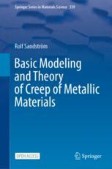Search
Search Results
-
Effect of the Initial Stress State on the Effective Properties of Piezocomposite
A new numerical-analytical solution of the “effective modulus” problem of statistical mechanics of piezocomposites was obtained considering the...

-
On the Development of Computational Fluid Dynamics Quenching Simulation Methodology for Effective Thermal Residual Stress Control
Heat treatment is a common manufacturing process in the automotive industry used to produce high-performance metal components such as aluminum...

-
Influence of modelling methods of a fluctuating weld geometry on the fatigue assessment using the effective notch stress approach
The notch geometry is influencing the fatigue of a welded joint, due to its local stress concentrating effect. This local stress can be considered in...

-
Influence of the geometry on the fatigue strength of welded joints using the effective notch stress approach
Using the example of a cruciform joint, this study enquires into the relationship between the geometry of weld (the wall thickness of base metal...

-
Correlation Among Stress State, Plastic Mechanism, and Texture Evolution for Magnesium Alloy Sheet: Analysis with Effective Schmid Factor
In real industrial process for metallic materials, complex stress states are usually involved with variations in texture features. Especially for Mg,...
-
Non-iterative Stress Projection Method for Rate-Independent Plasticity
A fully-explicit stress integration method is comprehensively discussed via finite element analyses using three different classes of continuum...
-
Exploring the Capacitance-Based Stress Self-Sensing Mechanism in Geopolymer Mortar and Its Correlation with Stress Levels
In this study, the capacitance-based stress self-sensing properties of fly ash-based geopolymer mortar are investigated for the first time. A...

-
Accurate Effective Stress Measures: Predicting Creep Life for 3D Stresses Using 2D and 1D Creep Rupture Simulations and Data
Operating structural components experience complex loading conditions resulting in 3D stress states. Current design practice estimates multiaxial...

-
Effective Viscoelastic Properties of Metal and Polymer Composites
AbstractThe relationships between stresses and strains in metal porous composites manufactured using 3D technologies, as well as in...

-
The Effect of Thermal Residual Stress on the Stress State in a Short-Fiber Reinforced Thermoplastic
Upon their cooling and solidification, significant thermal residual stresses can develop in short-fiber reinforced thermoplastics due to the mismatch...

-
Creep with Low Stress Exponents
Primary creep models predict that at low stresses a stress exponent of 1 can be obtained for dislocation creep. Also experimentally this has been...
-
Evaluation of the approach based on the maximum principal stress from the IIW-Recommendation for welded joints under proportional, multiaxial stress states
The IIW-Recommendation for fatigue design of welded joints and components presents two different evaluation approaches for multiaxial stress states...

-
Size Effect on the Statistical Distribution of Stress and Strain in Microforming
The frequency distribution of local stress or strain across the micromechanical field in plastic deformation tends to universally follow a normal or...
-
Structural hot-spot stress approach for toe cracking from plate edge of load-carrying welded attachment
The structural hot-spot stress approach is an effective method for assessing welding details when nominal stress is hard to determine due to...

-
Stress Relief for Crack Prevention by Adding Holes to V-Bending Die
Press forming of metal sheets has been widely used in industry. Press forming processes clamp sheet-metal between upper and lower dies, and deform...
-
Stress Relaxation Behavior of a Nb-Stabilized Austenitic Stainless Steel at 550 ℃
Stress relaxation resistance is one of the most significant properties that are critical to the service life of the fasteners. In this study, the...

-
Stress Cycles
Samples subjected to low cycle fatigue (LCF) under relatively high stress, fail at a low number of cycles. Below 105 cycles low cycle fatigue...
-
Estimation of Kinematic Hardening of Sheet Metals Based on Stress-Relaxation Behavior
This study investigates the relationship between stress relaxation behavior and kinematic hardening of sheet metals. Stress relaxation tests and...
-
Effective Plastic Properties of Porous Materials with an Inverse Opal Structure
The paper presents a theoretical evaluation of the mechanical properties of porous materials with an inverse opal structure, which is important for...

